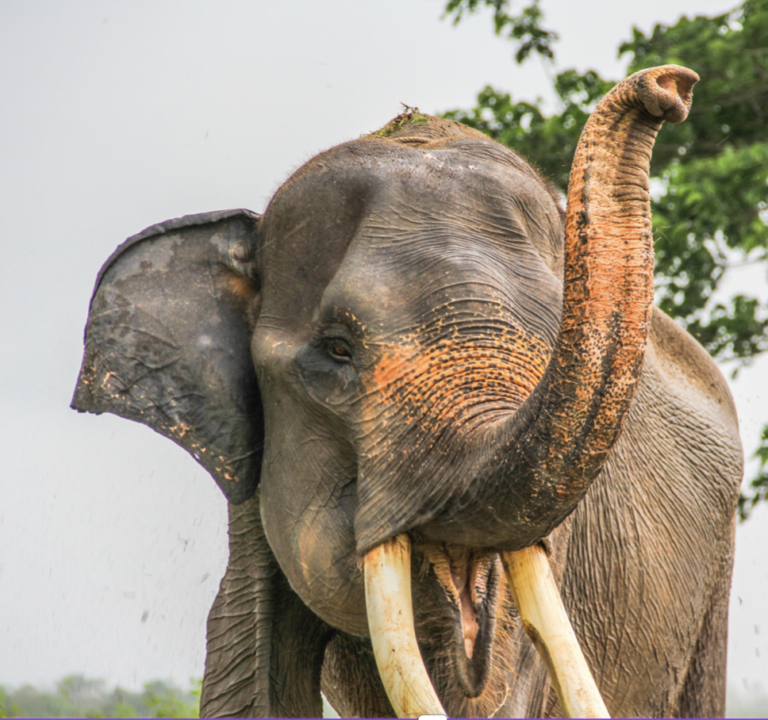Species in Peril:
Sumatran Elephant

A small but mighty pachyderm in trouble
Characteristics
Asian elephants are smaller and have the highest body point on the head than African elephants. One finger-like process extends from the tip of their trunk. Their backs are level or convex. Females are often smaller than males and have tusks that are either short or absent.
Sumatran elephants stand between 2 and 3.2 meters (6.6 and 10.5 feet) tall at the shoulder, weigh between 2,000 and 4,000 kilograms (4,400 and 8,800 pounds), and have 20 pairs of ribs. Their skin is paler than that of maximus and indicus, and they have the least amount of depigmentation.
They are considered the smallest of all the sub-species of Asian Elephants. And it’s critically endangered.
Habitat
The Sumatran elephant was previously common on the island, and in the 1980s, Riau Province was thought to contain Sumatra’s largest elephant population, with over 1,600 individuals. [1] In 1985, an island-wide quick survey estimated that between 2,800 and 4,800 elephants lived in 44 communities across Sumatra’s eight mainland provinces. According to surveys conducted between September 2000 and March 2002, twelve of these populations existed in Lampung Province, where only three populations existed in 2002.
Bukit Barisan Selatan National Park’s population was projected to be 498 people, whereas Way Kambas National Park’s population was expected to be 180 people. The third population in the Gunung Rindingan–Way Waya complex was deemed unsustainable long term.
Critically endangered
Many Sumatran elephant populations have lost habitat to humans as forests have been converted to human settlements, agricultural regions, and plantations. As a result, many elephants have been relocated or slaughtered in the wild. Elephants are also poached for their ivory, in addition to conflict-related deaths. 50 percent of Sumatran elephants died between 1985 and 2007. Between 1980 and 2005, 69 percent of Sumatran elephant habitat was destroyed in just one elephant generation, and the forces that produced this habitat degradation are still largely unregulated. In two provinces, Riau and Lampung, there is convincing, direct evidence that entire elephant populations have vanished as a result of habitat loss.
Most of the elephants found in Sumatran camps were captured after crop-raiding in protected areas. The reduction of the elephants’ habitat for illegal conversion of agriculture still continues.
A Few More Facts About Sumatran elephants
They can weigh up to 5tonnes and reach 9ft in height.
Female Sumatran Elephants rarely have tusks, but the females that do keep them hidden away from sight until they open their mouths.
With a stranger appearance to their African cousins, the Sumatran Elephant is almost completely bald with small rounded ears.
They are also one of the smallest Asian elephants that are known to the world.
Sumatran elephants are gray in color and are nearly bald.
They are herbivores
They are very sociable animals
Species Name
Elephas maximus sumatrensis
Estimated Population
2,400 – 2,800 in the wild
Conservation Status
Critically endangered
Range
Island of Sumatra, Indonesia
Reasons for Population Decline
Habitat destruction
Human encroachment


